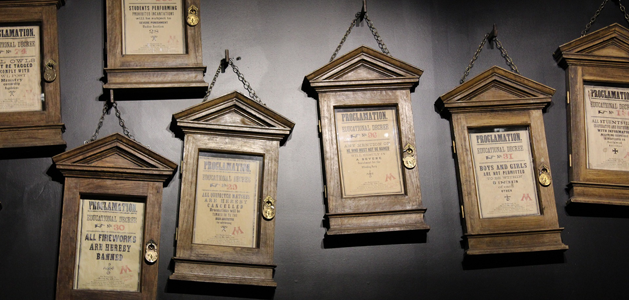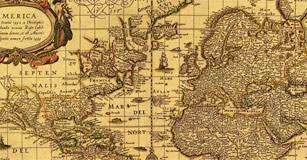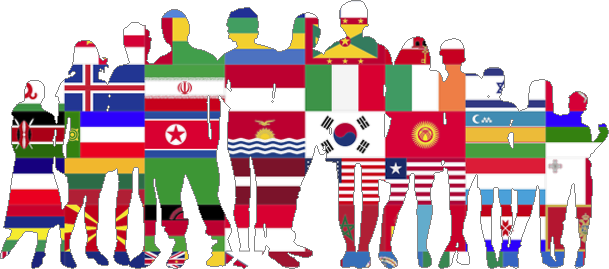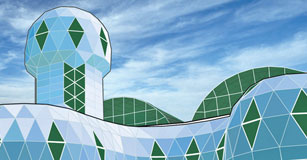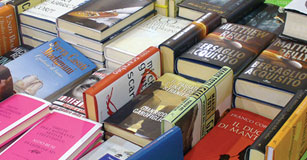Exploring Line Symmetry
Students will create original artwork and manipulate images to demonstrate understanding of line symmetry.

Task
You can study art mathematically by looking for different types of symmetry. An object that can be divided with one line, resulting in a mirror image on both sides of the line, has bilateral symmetry. Faces and butterflies are examples of objects with bilateral symmetry. An object made up of similar parts arranged around an axis, such as a starfish or a propeller, has radial symmetry. Symmetrical items can give a calming feeling to a piece of art.
Engage
Write the word “symmetry” on the board. Ask your students if they can tell you what it means. Share some examples of real-world objects that are symmetrical. See if you can get students to define what makes these images symmetrical.
To help students grasp the concept of symmetry, distribute square handheld mirrors and have them practice making symmetry by holding the mirrors up to various objects. Explain that this is called bilateral, or line, symmetry because the symmetry is along one axis.
Go back to the example images of symmetry and ask students to identify the line of symmetry in each image. Then, share examples of symmetry from the second-grade symmetry web site listed in the resources.
Read and share Loreen Leedy’s great book, Seeing Symmetry, with your students.
Create
Activity 1: Symmetry in the World Around Us
To give students a chance to practice and apply their skills, divide them into teams of three or four. Have each student use a digital camera or mobile device to capture a picture of a symmetrical object.
Help each team transfer their images to the computer. Print them out or have students import the images into a digital paint program like Wixie and use a Line tool to draw the line, or lines, of symmetry on each image.
If students do not have access to a digital camera or mobile device with one, students can find and add photographs from sites like Pics4learning.com. Wixie includes both a Stickers library filled with clip art as well as integrated access to the Pics4Learning library of photos.
Activity 2: Mirror Symmetry with Faces
Though our faces exhibit symmetry, they are not perfectly symmetrical. Have students capture an image of their face and use a paint or imaging program to show how one side of their face is slightly different from the other.
Have students pair up to take a front view photograph of each other’s faces. Have them import the image to a digital paint program and add the image. If you are using Wixie, remember to go to the Edit menu and Glue to Paint layer.
Use the rectangle selection tool to select their entire face. Duplicate or copy and paste the selection so that there are three versions. An original, as well as two others students can use to mirror each side of their face.

Once students have three images, use a rectangle selection tool to select the right or left side of their face. Duplicate the selection, flip it on a vertical axis and move over the other half of their face.
When students repeat this process for the other side of their face, they will see how different each side of their face really is.
Activity 3: Painting Symmetrical Objects
Butterflies are common symmetrical objects. Share a couple of images of butterflies and have students talk about their symmetry. Make sure they can identify the line of symmetry that runs directly through the body of the butterfly.
If you have Wixie, challenge students to think symmetrically and draw a butterfly using include symmetry options for the paintbrush tool. Show students how to turn on mirror symmetry options for the paint brush. Then challenge students to paint a butterfly with a vertical body and one wing. Then, have them use the same technique they used for their faces to create a complete butterfly by selecting half the butterfly, copying and pasting the selection, flipping it and moving it into position.

Some paint programs, like Wixie, include symmetry options for the paintbrush tool. Show students how to turn on mirror symmetry options for the paint brush. Then challenge students to draw a butterfly using a paintbrush that mirrors what they draw to create a second wing as they draw the first.
Next, test students’ ability to think symmetrically by having them use the mirroring feature of the Paintbrush tool to draw another butterfly. Have students choose the Paintbrush tool, check the Mirror box on the Editing panel, and choose 2 for line symmetry painting. Starting in the middle of the canvas, have them paint one wing; the other wing will paint at the same time. Remind them to click the Undo button if they need to try again.
Share
Print and post students artwork as a celebration of how symmetry can be used in art. After printing, have students work to sort the butterflies into groups, working to define attributes that make them similar or different.
Combine individual student pages together to create a slide show or digital book. (If you have Wixie use the Import Pages feature. Share the combined project URL on your web site or export as a PDF or ePub to share with family and community.
Assessment
As the students work on their line symmetry activities, assess each student’s progress to ensure that they understand symmetry correctly prior to the final sharing process. The final set of activities will help you assess their ability to analyze symmetry and express it through the creative process.
Resources
Loreen Leedy. Seeing Symmetry. ISBN: 0823427625
Symmetry and Pattern https://mathforum.org/geometry/rugs
Standards
Common Core Standards for Math – Geometry
Draw and identfiy lines and angles, and classify shapes by properties of their lines and angles
4.G.3. Recognize a line of symmetry for a two-dimensional figure as a line across the figure such that the figure can be folded along the line into matching parts. Identify line-symmetric figures and draw lines of symmetry.
ISTE NETS for Students 2016:
6. Creative Communicator
Students communicate clearly and express themselves creatively for a variety of purposes using the platforms, tools, styles, formats and digital media appropriate to their goals. Students:
a. choose the appropriate platforms and tools for meeting the desired objectives of their creation or communication.
b. create original works or responsibly repurpose or remix digital resources into new creations.
c. communicate complex ideas clearly and effectively by creating or using a variety of digital objects such as visualizations, models or simulations.
d. publish or present content that customizes the message and medium for their intended audiences.




